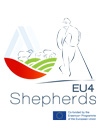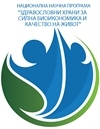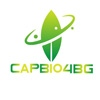Weather and forecasting
|
Course title: |
Weather and forecasting |
|
|
Course code: |
AFWFD |
|
|
ECTS: |
5 |
|
|
In-class hours |
Lectures: |
30 |
|
Laboratory work/Tutorials: |
30 |
|
|
Self-preparation hours |
Practical training: |
- |
|
Other: |
65 |
|
|
Total hours: |
125 |
|
|
Language: |
English |
|
|
Study cycle: |
Bachelor, Master, PhD |
|
|
Semester: |
Winter & Summer |
|
|
Faculty: |
Faculty of Agronomy |
|
|
Name of the lecturer(s): |
Assoc. Prof. Dafinka Ivanova, PhD |
|
|
Mode of delivery: |
Face-to-face, distance learning, combination of both |
|
|
Prerequisites: |
Basic knowledge on physics, mathematics, geography or other natural science |
|
|
Learning outcomes of the course unit: |
The weather events happening in an area are controlled by changes in air pressure. Air pressure is caused by the weight of the huge numbers of air molecules that make up the atmosphere. Typically, when air pressure is high there skies are clear and blue. The high pressure causes air to flow down and fan out when it gets near the ground, preventing clouds from forming. When air pressure is low, air flows together and then upward where it converges, rising, cooling, and forming clouds. Meteorologists develop local or regional weather forecasts including predictions for several days into the future. The best forecasts take into account the weather events that are happening over a broad region. Knowing where storms are now can help forecasters predict where storms will be tomorrow and the next day. Technology, such as weather satellites and Doppler radar, helps the process of looking over a large area, as does the network of weather observations |
|
|
Course contents: |
LECTURES- 30 HOURS 1. Definition of weather - Weather is the mix of events that happen each day in our atmosphere. Weather is different in different parts of the world and changes over minutes, hours, days and weeks. Most weather happens in the troposphere, the part of Earth’s atmosphere that is closest to the ground. Subject, research methods. 2. The Highs and Lows of Air Pressure- Pressure varies from day-to-day at the Earth’s surface - the bottom of the atmosphere. This is, in part, because the Earth is not equally heated by the Sun. Areas where air is warmed often have lower pressure because the warm air rises and are called low pressure systems. Places where air pressure is high are called high pressure systems. 3. A low pressure system has lower pressure at its centre then the areas around it. Winds blow towards the low pressure, and the air rises in the atmosphere where they meet. As the air rises, the water vapour within it condenses forming clouds and often precipitation too. Because of Earth’s spin and the Coriolis Effect, winds of a low pressure system swirl counter clockwise north of the equator and clockwise south of the equator. This is called cyclonic flow. On weather maps a low pressure system is labelled with red L. 4. A high pressure system has higher pressure at its center then the areas around it. Wind blows away from high pressure. Winds of a high pressure system swirl in the opposite direction as a low pressure system - clockwise north of the equator and counterclockwise south of the equator. This is called anticyclonic flow. Air from higher in the atmosphere sinks down to fill the space left as air blew outward. On a weather map the location of a high pressure system is labeled with a blue H. 5. Air mass- is not the same everywhere. In North America, for example, cold and dry air covering thousands of miles flows south from the Arctic, especially in winter, and warm moist air flows south from the Gulf of Mexico. These different types air are called air masses. Definition of different air mass in geographical regions. 6. How clouds forms- classification, determination. The water or ice that makes up clouds travels into the sky within air as water vapor, the gas form of water. Water vapor gets into air mainly by evaporation – some of the liquid water from the ocean, lakes, and rivers turns into water vapor and travels in the air. The vapor becomes small water droplets or ice crystals and a cloud is formed. 7. Atmospheric fronts-arm and cold fronts. 8. Global Look at Moving Air: Atmospheric Circulation Air in the atmosphere moves around the world in a pattern called global atmospheric circulation. 9. The Water Cycle -Water travels around the planet through the water cycle. Water is always on the move. Rain falling where you live today may have been water in a distant ocean days before. 10. The weather satellite use to monitor the weather and climate. 11. Radars like electronic instrument, which determines the direction and distance of objects that reflect radio energy back to the Earth. 12. Weather Forecasting Activities Doppler Radar, NEXRAD Radar and est.
LABORATORY PRACTISE - 30 HOURS 1. Solar radiation- measurement, instruments and units. 2. Air temperature - measurement, instruments and units. 3. Soil temperature- measurement, instruments and units. 4. Atmosphere pressure- 5. Clouds forms- classification, determination 6. Atmospheric fronts-arm and cold fronts on the computer programmes. 7. Wind- measurement and instruments and units. 8. Rain and Snow measurements- measurement and instruments and units. 9. The weather satellite use and programmers. 10. Weather Forecasting programs and models. |
|
|
Recommended or required reading: |
1. Ahrens, C.D. 2003. Meteorology Today: An Introduction to Weather, Climate, and the Environment 7th Edition. Thomson Learning. 2. Barry, R.G., R.J. Chorley, and N. J. Yokoi. 2004. Atmosphere, Weather, and Climate. 8th Edition. Routledge, London. 3. Bindschadler, R.A. and C.R. Bentley. 2002. On thin ice? Scientific American Dec.: 97-105. 4. Bryant, Edward. 2002. Climate Process and Change. Cambridge University Press. 5. Crowley, Thomas J. and Gerald R. North. 1996. Paleoclimatology. Oxford University Press 6. Mayes, J. and K. Hughes. 2004. Understanding Weather. Hodder Arnold, London 7. McElroy, Michael B. 2002. The Atmospheric Environment: Effects of Human Activity. Princeton University Press. 8. Schneider , S.H. (Editor). 1996. Encyclopedia of Climate and Weather. Oxford University Press. 9. Shelton, M.L. 1988. Climate and Weather: A Spatial Perspective. Kendall/Hunt, Dubuque, Iowa. |
|
|
Planned learning activities and teaching methods: |
Lectures, presentation and briefing Conversation and discussion |
|
|
Assessment methods and criteria: |
Exercises evaluation and final written exam. |
|
 - Събития по случай 80-я юбилей на АУ
- Събития по случай 80-я юбилей на АУ











